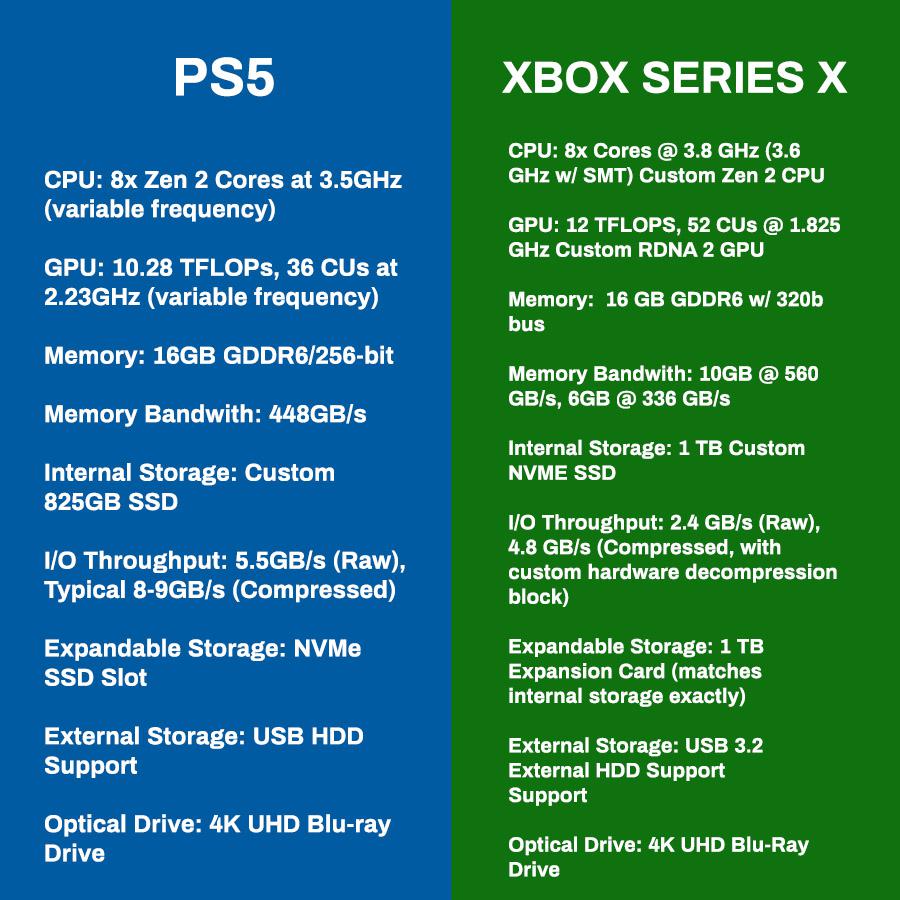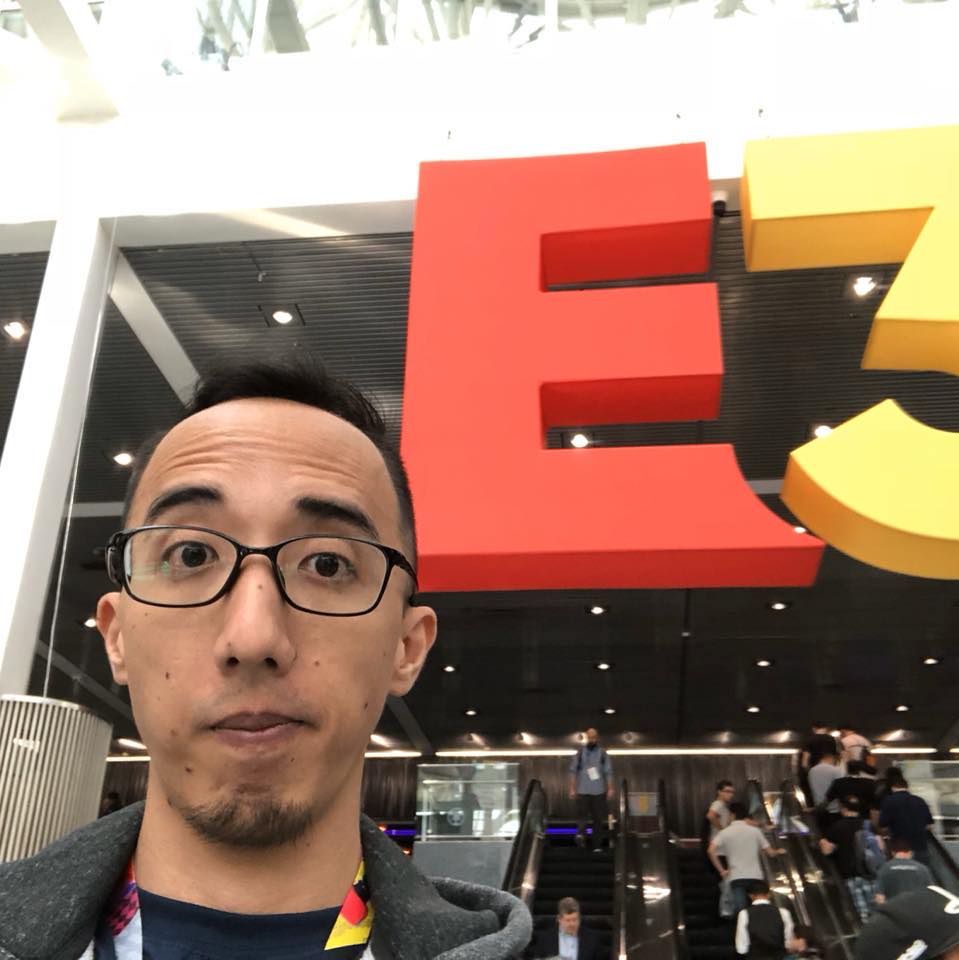Now the real battle for the next gen can officially begin.
Well, sort of.
The Xbox Series X can finally bask in the distinction of being the most powerful going into the next gen, boasting of 12 Teraflops of GPU power and some specs by the numbers. They have held the title ever since the Xbox One X came out and are keeping the belt on their side of the fence.
The PS5, on the other hand, is going into the fight with a slightly underpowered console for the second straight instance after the PS4 Pro. Marginally weaker by about 1.72 Teraflops as per the spec sheet, the PlayStation is used to punching with slightly less power but still performing way above their weight class nonetheless. Don’t believe it? Just look at the PS4 sales numbers.
Then again, taking these specs at face value is not the most accurate way to gauge success potential BUT it also absolutely wrong to completely disregard the facts. Let’s take our own “deep dive” into some of the more relevant specs and try to explain it in more simpler terms for our own sanity.

Photo credits – https://www.reddit.com/r/xboxone/comments/fksayy/ps5_vs_xbox_series_x_specs_comparison/?utm_source=share&utm_medium=web2x
To start, Teraflops is not THE definitive benchmark to go by. If anybody tells you otherwise, you’re free to promptly shut them up for a bit. While it is one indicator, it does not tell the whole story.
Both next generation consoles are making a massive leap over their current offerings in the PS4 Pro and the Xbox One X. Currently, both are already spitting out jaw dropping titles like God of War, Forza Motorsport 7, and Death Stranding among others. Can you just imagine how mind blowing the next generation of games are going to look like?
Games are also only as good as the developers behind them, so how easy it will be for developers to build around these new consoles will be a very important aspect of next gen success.
That said, the Xbox Series X have unveiled their baby early and it is undoubtedly a very, VERY powerful machine. Coming from the Xbox One X that has produced native 4K 60FPS gaming experiences, the Series X will surely come out of the doors with twin rocket launchers in tow and ready to blast everything.
The PS5 on the other hand have not been as upfront as Microsoft, spilling a few things here and there over time. Their deep dive, while revealing the philosophy on how they designed the PS5, still left a few things unanswered.
The guys over at Digital Foundry put out their own deep dive of the PS5 and if you do not know who these guys are, it’s about time you do. Their unbiased and thorough explanation is one of the best out there.
CPU
Both CPU’s are nearly 100% identical, save for the fact that the PS5 highlighted a 3.5GHz “Variable Frequency” set while the Xbox Series X (or SeX, sorry) will feature a 3.8GHz with “Simultaneous Multithreading”.
An easier way to think about this is that the SeX will have their CPU running at peak performance at all times, pushing out 3.8GHz for single core processes and 3.66GHz otherwise. The PS5 will be able to shift between frequencies depending on usage and demand while staying at a consistent power consumption level, in turn possibly alleviating overheating concerns.
It is safe to assume that the PS5 will not be hitting 3.5GHz at all times, only for when it needs to. Will a cooler, less power hungry but more adaptive CPU weigh more in your priority list over a slightly faster one that spits out consistent firepower at all times?
Some narratives will point to the PS5 hiding its power behind its throttling mechanisms, which may be true. To be frank about it there is no denying that the SeX has the edge here, but not by much. What it means for heating concerns? That’s a different story that we cannot conclude for now since there’s no software to test on yet but Microsoft have surely taken it into consideration, hence their tower design.
GPU
The number that the SeX has been gloating of. 12 is definitely greater than 10.2. Again, no two ways about it, the PS5 will take the kick on this one in terms of raw power.
One thing to look at though is that the PS5 will have 36 CU’s (Computer Units) over 52 from the SeX and while that’s a massive difference in terms of number, the PS5 CU’s will be pumping at a higher 2.23GHz frequency over the 1.825GHz of the Xbox. Cerny did say that a higher speed is overall better over more CU’s,pushing the PS5 direction of efficiency over raw power.
Again, like the CPU discussion, 2.23GHz for the PS5 is variable, which means it will not be hitting that peak often. If this peak number is what’s bringing the PS5 spec to 10.2 Teraflops, it would be quite safe to assume that it could possibly be lower.
Will this difference even be that visible when there are actual games to play? While the SeX will be more capable of pumping out more pixels and frames which simply means a better looking and performing game, graphics can only be pushed so much and will really be limited by a lot of other external factors like what displays the consumers own and even by the developers themselves. While there is no software to compare it yet, it would be safe to assume that next generation games will look slightly better on the SeX. By how much? We’ll see. Will it even be drastically noticeable? Again, we’ll see.
SSD
A big point of contention lies in the SSD, which leads us to believe that while the SeX focused on brute strength, the PS5 looked towards making things faster while sacrificing some power. Efficiency is the name of the game for the PS5.
According to the presentation, the PS5 SSD twice as fast as the SeX, so what does this speed equate to? Load times will take the most obvious hit but it will even affect how games are fundamentally made, cutting out a lot of unnecessary filler and getting users playing faster. Remember that Subway loading scene from the PS4 Spider-Man game, or any loading screen for that matter? They could be gone, forever.
The SeX has shown how much loading time it can cut compared to the One X. The question now remains, how much more can the PS5 cut over the Series X? 3 more seconds? 5? Will it be so much more that it counters the lack of power from the other components? Will it even be drastically noticeable?
Being this fast poses a bit of a problem. Sony is banking on their highly custom SSD, among other things, to carry the PS5 into greatness, but at what cost? The tech used here sounds very expensive but to alleviate concerns, the PS5 will allow third party SSD manufacturers to provide external storage options as opposed to the proprietary hardware the SeX will be putting out.
The catch? Sony will need to certify that the storage options will be able to provide the same performance requirement to run actual PS5 games. Again, sounds expensive. More expensive than the proprietary SeX option? We’ll find out soon enough.
Pricing, Content, and Backwards Compatibility
At this point, the PS5 is facing an uphill battle just because Microsoft have already revealed so much of their system that people can already concretely visualize what to expect from the SeX. Microsoft even went as far as to show a select few content creators of what the SeX is packing, Digital Foundry included. Truth be told, the only uncertainty behind their system will be one of the most important questions – How much will it cost? Surely all that power and performance has got to account for a hefty price tag. Microsoft know full well that they made a boo boo last generation which cost them the battle and they should be wiser this time around.
Sony is making the most of a slightly underpowered machine but with a never before seen SSD and a heavy emphasis on 3D audio for an immersive experience like no other. While it is quite obvious that it may possibly perform at a lower clip compared to the SeX, will it matter to the average user and will it be noticeable enough for the more hardcore players? Are Sony aiming for a sweet spot that will allow them sacrifice performance but compensating heavily on other things that also matter, consequently lowering their price point that is a make or break consideration for a lot of people?
Content is also a big deal for a lot of users and Sony has this to bank on. While some of their exclusives have made their way to other platforms, they’ve still got quite the formidable lineup that could be enough to win the upcoming war. Microsoft have taken this into account and have made fantastic studio pickups as well, bolstering their first party lineup that will give Sony a run for their money.
Speaking of content, Microsoft have made quite a big deal of backwards compatibility, ensuring that all generations are supported. Sony, on the other hand, have reiterated that their long confirmed PS4 compatibility will be ready by launch for most of their PS4 library, with no word on the PS1 PS2 and PS3. The question to be asked is as such – is backwards compatibility across all generations really, REALLY a necessity? As a gamer, can you honestly say that you’ve used your current generation system to play old games? And if so, how much? Enough to bump the cost of your upcoming purchase due to the technology involved?
The mere thought of the incoming console generation is indeed pretty damn exciting. With all the new technology involved and the prospect of games taking advantage of this, it’s hard to not get psyched. At the end of the day, both consoles will offer something different to the table and it’s interesting to see how their design decisions will affect how well their consoles will do. Power over Speed? Brute over Finesse?
The Holiday 2020 battle is indeed underway.
Videogame Content Editor. A father and gamer. Would gladly trade what’s left of his soul to witness a Final Fantasy 6 and Xenogears remake done during his lifetime.





